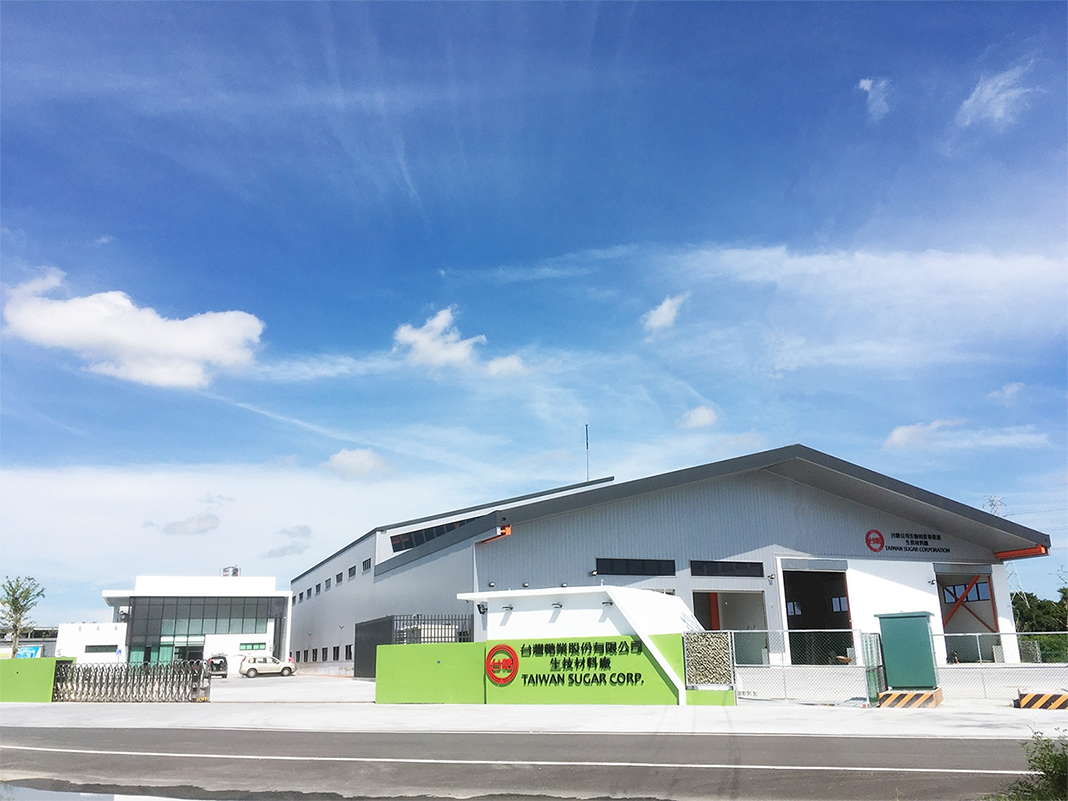Background and Goals
- To implement the national policy for a circular economy and simultaneously address environmental pollution caused by oyster shells, Taiwan Sugar Corporation (TSC) has invested NT$170 million to build a biomaterial plant dedicated to the recycling and reprocessing of oyster shells, promoting resource circularity.
- The goal of this project is to establish TSC as a benchmark company for circular economy in Taiwan.
Implementation Progress
- The oyster shell biomaterial plant, located in Yongkang Industrial District, Tainan, was completed on June 30, 2020. The plant has obtained all necessary permits, including factory registration, waste reuse organization license, and stationary pollution source operating permit. The plant has completed equipment process optimization adjustments and established SOPs for machinery operation. It commenced mass production and operations in September 2021. The management system has also achieved ISO 14064-1:2018 Greenhouse Gas Verification Opinion, ISO 9001, ISO 45001, environmental labeling, and BS 8001 Circular Economy Certification (passing the highest level, Level 4).
- The company is continuously developing new customers in the agricultural and industrial sectors, expanding the applications of oyster shell powder. TSC is also collaborating with research institutions to obtain relevant research data, enhancing the practical feasibility and marketing persuasiveness of oyster shell applications.
- TSC participates in major domestic exhibitions to promote the value of a circular economy created by recycling and reusing discarded oyster shells to businesses and the public.
Future Development
The company plans to explore diverse applications for oyster shell powder, including antimicrobial plastics, filter materials, 3D printing materials, ceramic cultural products, detergents, and more. TSC will continue conducting carbon audits, obtaining green certifications such as carbon footprint labels, and collaborating with downstream manufacturers to enter the international market, thereby enhancing industrial technology and resource value.
Implementation Benefits
- Besides replacing calcium carbonate derived from large white limestone, oyster shells are transformed into valuable resources, creating a positive cycle of job creation, capital flow, and resource flow in rural areas.
- The positive effects of the circular economy include promoting the reuse of oyster shell biomaterials and guiding new industrial strategies. It encourages people to actively engage in environmental protection. All oyster shells in Taiwan will be transformed into resources, eliminating the practice of discarding them haphazardly. TSC has built a supply chain through purchasing oyster shells, making positive contributions to its corporate social responsibility (CSR), generating positive exposure, and enhancing the company's image.
Collaboration Partners and Opportunities
- Collaborating with industry partners and downstream application manufacturers to develop diversified products such as antibacterial plastics, filter materials, biodegradable materials, agricultural materials, eco-friendly building materials, 3D printing substrates, ceramic cultural and creative products, detergents, eco-friendly cushioning packaging, and eco-friendly incense.
- Partner with the Tainan City Government to designate the temporary oyster shell storage site in Anan District, Tainan as a demonstration area. This aims to encourage oyster farmers to effectively recycle discarded oyster shells. Through the city government's assistance and collaboration with industry partners, TSC will utilize innovative models to create a circular economy chain for marine waste.
- We have collaborated with multiple universities and academic research institutions on industry-academia cooperative projects to develop diverse applications for oyster shell powder. Currently, it is being used in fisheries and aquaculture. We will continue to actively cooperate with various academic and research institutions to explore more potential markets.




